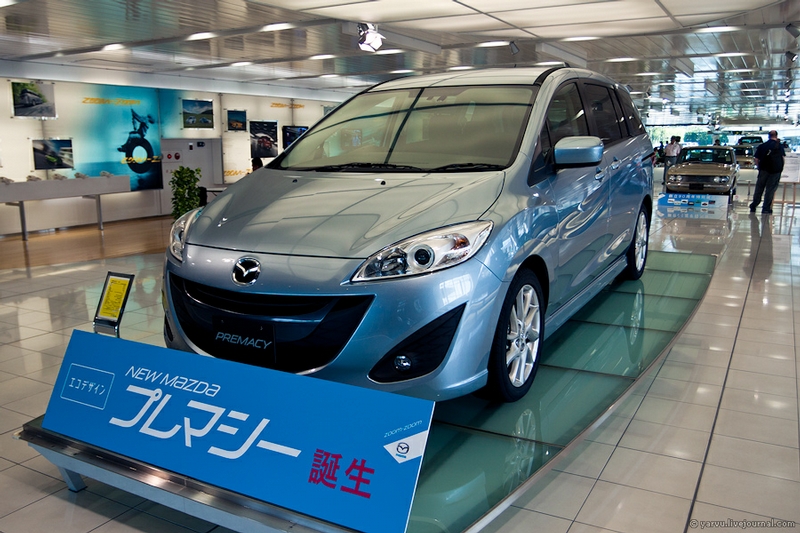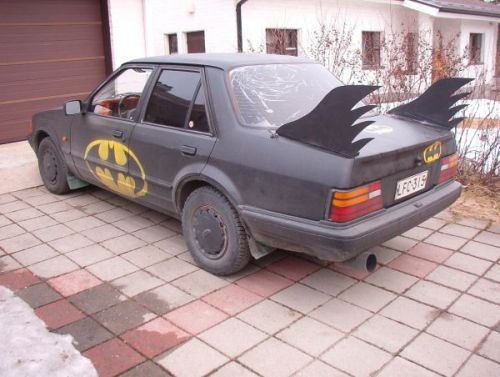Mercedes-Benz is, perhaps the single most identifiable symbol of luxury and style in the automotive world. Mercedes has been leading the field with a delicate balance between style and technology since 1881, which makes it the oldest car manufacturer in existence today. While it is often said that you can tell what cars will look like in 20 years by looking at a Mercedes-Benz today, this list is a look back at Stuttgart powerhouse’s best designs.
1979 Gelandewagen (G-Class)
The G-Wagon of 1979 was built for the German army as a lightweight combat vehicle – you can think of it as the more badass version of the Jeep. The model didn’t make it into combat that year when the less expensive Volkswagen alternative was selected instead; however, it did kick off a global phenomenon that is still alive and well to this day. The instantly recognizable boxed-off body of the G-Wagon is an automotive icon both in the world of luxury and in off-roading. At the time it was built, it was one of only a tiny handful of vehicles with three fully locking differentials. Now, the G-Wagon is a favorite among celebrities and rappers, and with a starting price tag of over $100,000, it is one of the most expensive SUVs on the road.
2004 CLS
The CLS was, and still is, a revolutionary vehicle concept. It featured a sloped roof like a sports car or coupe, but four doors and a backseat. However, that backseat only had room for two people, not three. The CLS can be described as both a four-door coupe or even a fastback sedan, but the smooth aesthetics of the CLS not only got rave reviews, but also set the tone for the likes of Maserati, Porsche and Aston Martin to release sports car-like executive sedans, something that had previously not been attempted. The CLS created an entirely new vehicle segment, one of the fastest growing in the world today, and did it with style.
1983 190E Cosworth
Originally built to compete in off-road rallies, the Cosworth 190E was put out of the running by Audi’s innovative Quattro all-wheel drive system. That doesn’t mean the 300-plus horsepower special edition E series wouldn’t fly on the road. In fact, the Cosworth set three world speed records in the following years, and was the inspiration for the likes of the BMW M3, which later upped the ante for performance sedans. Think of the 190E Cosworth as the original AMG sedans.
2010 E63 AMG
A wolf in sheep’s clothing if there ever was one, the E63 AMG is perhaps the most perfect “all-purpose” sedan in the world. The car is every bit your typical E-Class Mercedes to 90% of onlookers, but those that are automotively inclined will notice the 20-inch AMG rims, flared body kit and a growl that will wake the neighbors each morning. The E63 uses the AMG-tuned 6.2 liter, 517-horsepower engine you’ll find across the Mercedes lineup; however, what makes the E so special is not the 4.0-second 0-60 time, the riding-on-rails feel or even the three different suspensions or four different transmission settings – it’s the fact that it’s the perfect size. The C63 is too small to be really useful with four people, and the S63 is too large be understated. If you want one car that can do it all, the E63 AMG is the car for you.
2011 SLS AMG
The new 2011 SLS AMG “Gullwing” is a retro grand tourer made from an all-aluminum frame. The car is the very first to be completely designed in-house by AMG, Mercedes’ own high-performance unit. The car features a highly tuned 6.2 liter V8 engine that puts out 575 hp, and the transmission is a 7-speed dual-clutch semiautomatic. The most noticeable part of the SLS is the Gullwing doors and purposeful nod to the original Gullwing of the mid-1950s, a car that many consider the most beautiful ever made. This, the SLS Gullwing, is a totally different animal with all the latest technology, which does include a way to blow the doors right off the frame if you should happen to flip the car. The 2011 Gullwing is without a doubt the hottest car of the year, and will be remembered as a true modern classic.
1963 600 Pullman
Can you name the one car owned by Coco Chanel, Hugh Hefner, Elizabeth Taylor, John Lennon, Aristotle Onassis, Jack Nicholson, Fidel Castro, Pol Pot, and a whole bevy of Popes? Yup, the Mercedes-Benz 600 Series Pullman. This car was the luxury sedan for two decades, and yet less than 3,000 of them were ever built. The Pullman featured a hydraulically operated moon roof, windows, trunk, and doors (in 1963!). It also boasts the loudest horn ever installed on a production vehicle. The Pullman was the predecessor to the Maybach sedans we see now atop the Mercedes lineup, and it is still an icon to this day.
1937 540 K Special
For a car to have 180 horsepower and a supercharged engine in the 1930s, it needed to be something special. The 540 K (K is for Kompressor) Special was just that car, and set the benchmark for the horsepower race of the first half of the 20th century. At the time, the fastest, most powerful cars on the road were just breaking 100 horsepower, so the 540 K was a leap ahead of the competition. Its massive engine required an enormous nose and the front-end weight made steering difficult. The car was best designed for cruising on the autobahn at high speeds, not for taking sharp curves through the Italian Alps. These cars can fetch up to $6 million at auction today.
1970 C111
The C111 series was an experimental line of cars used by Mercedes-Benz to test innovative technologies of the day like diesel engines, mid-mounted engines and even luxuries like air conditioning. The body of all the C111’s was made of fiberglass and its sliver-like design gave it an unheard of drag coefficient of .191. The C111 set numerous land speed records and many times broke 200 mph. A later version of the C111, equipped with a 500-horsepower engine, once set a record of highest average lap speed of 250.98 mph in 1979.
1954 300 SL Gullwing
The 300 SL Gullwing is the car that changed it all for Mercedes-Benz in the U.S. Prior to the introduction of this model, Americans believed Mercedes to be the maker of classic, high-quality, but boring cars. The Gullwing made people look at MB as the maker of luxury sports cars for the rich and beautiful, despite only 1,400 Gullwings being produced. On top of its trademark upward opening doors, the 300 SL was the first-ever gasoline-powered car equipped with fuel injection directly into the combustion chamber. The Gullwing was recently ranked the No.5 sports car of all time, and it is nothing short of an icon.
1955 300 SLR Racer
It’s not often that a racer takes inspiration from a streetcar, but that’s exactly what happened here. The 300 SLR was based off the U.S. market 300 SL Gullwing, but was much lighter due to the use of a tubular aluminum frame. The 300 SLR was the first race car to use air brakes and was the car of choice for legendary racer Stirling Moss when he competed in the 1955 Mille Miglia, which he won in record-setting fashion. The 300 SLR is being celebrated this year with a limited edition watch from TAG Heuer, and represents the pinnacle of classic Mercedes-Benz design and engineering.






 Octopus is currently the world’s eighth largest super yacht, owned by Paul Allen. Octopus was launched by Microsoft’s “accidental billionaire” Paul Allen – worth US$20 billion according to Forbes, the third richest man in America and 7th in the world in 2003. It is the second largest super yacht that is not owned by a head of state. It has two helicopters, seven boats, a 10-man submarine and a remote controlled vehicle for crawling on the Ocean floor. The submarine has the capacity to sleep eight for up to two weeks underwater.
Octopus is currently the world’s eighth largest super yacht, owned by Paul Allen. Octopus was launched by Microsoft’s “accidental billionaire” Paul Allen – worth US$20 billion according to Forbes, the third richest man in America and 7th in the world in 2003. It is the second largest super yacht that is not owned by a head of state. It has two helicopters, seven boats, a 10-man submarine and a remote controlled vehicle for crawling on the Ocean floor. The submarine has the capacity to sleep eight for up to two weeks underwater.











